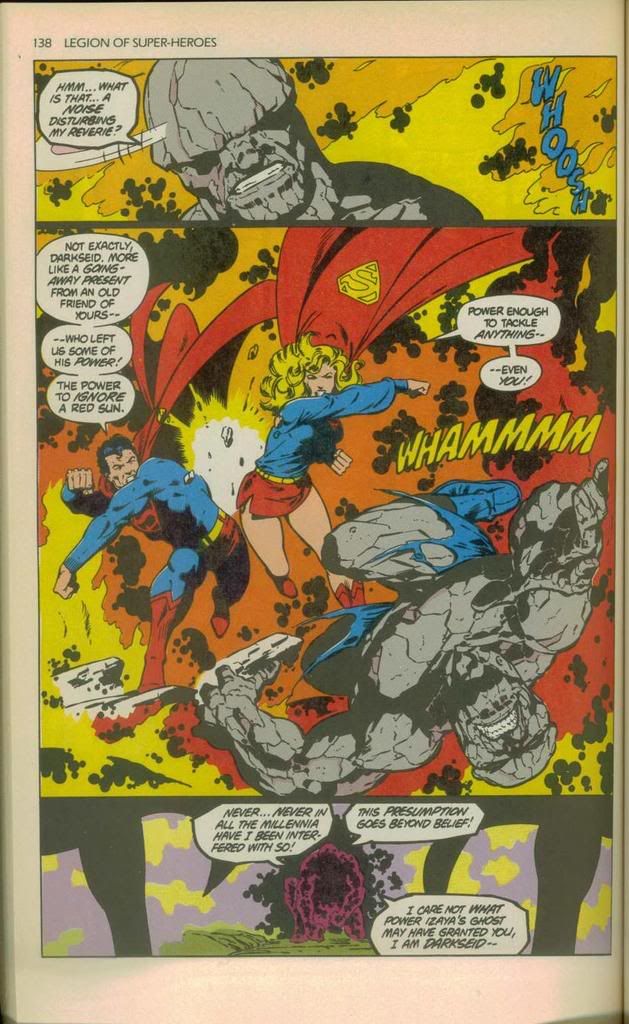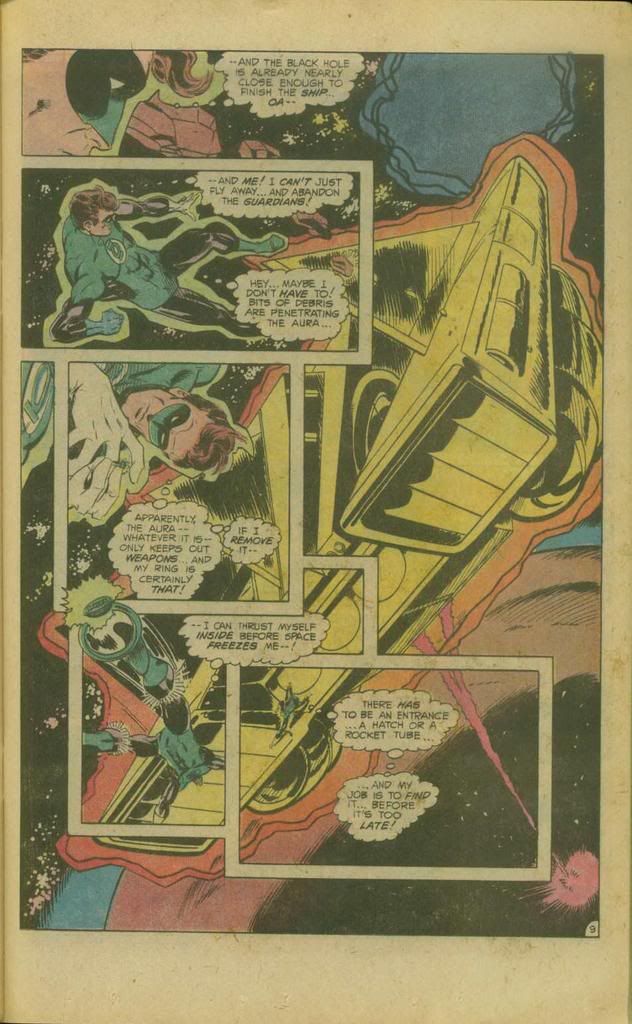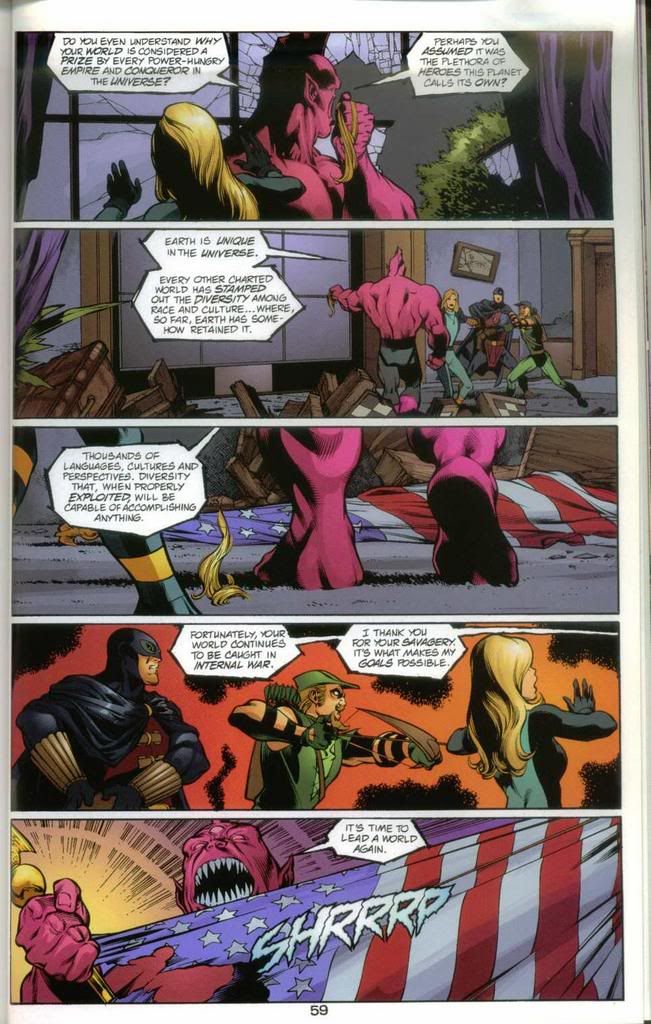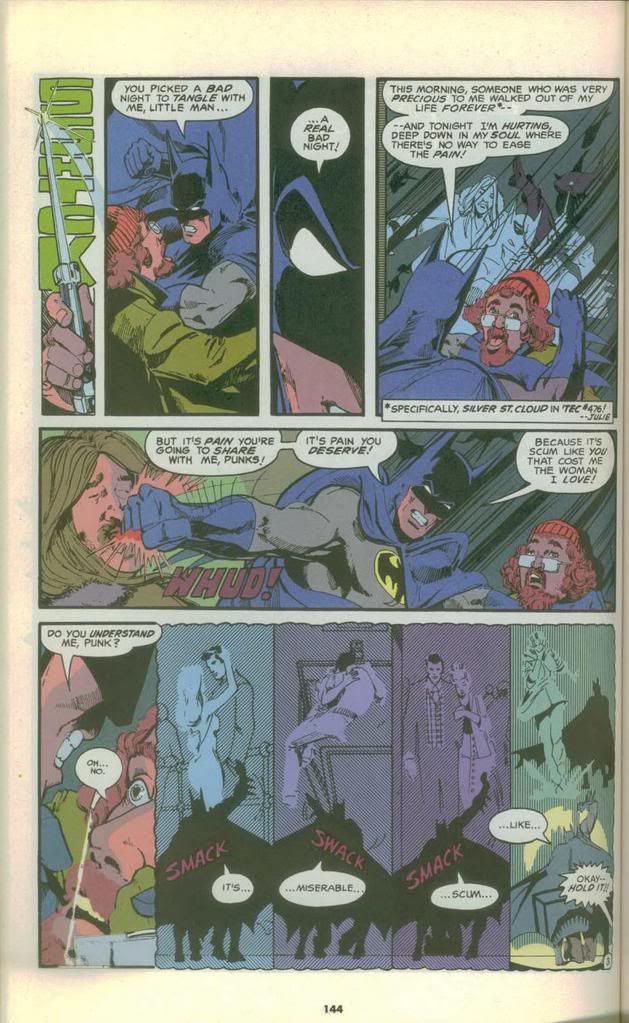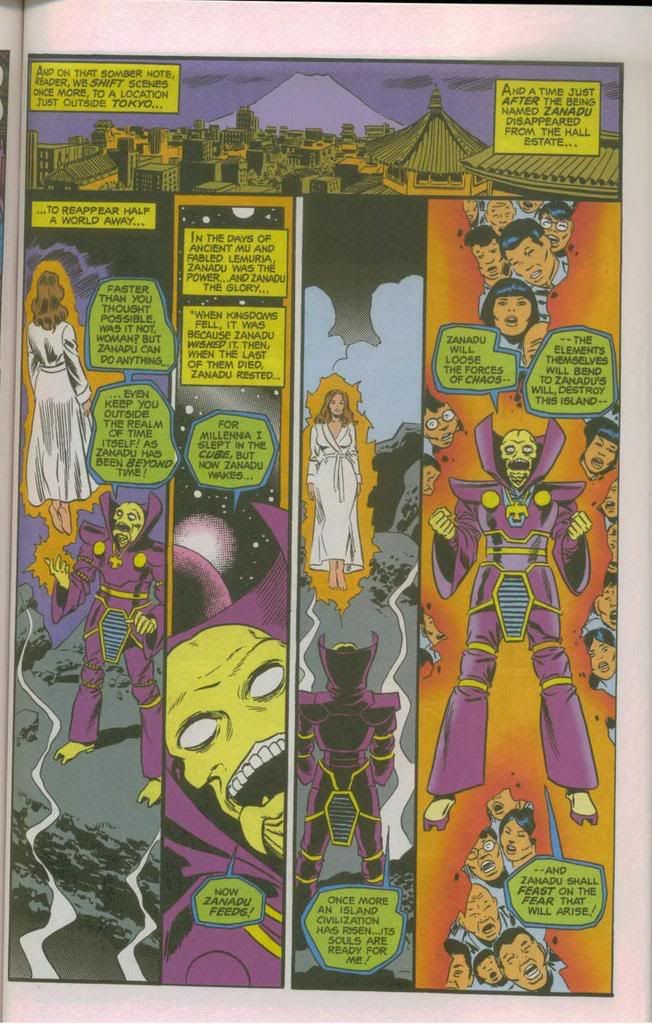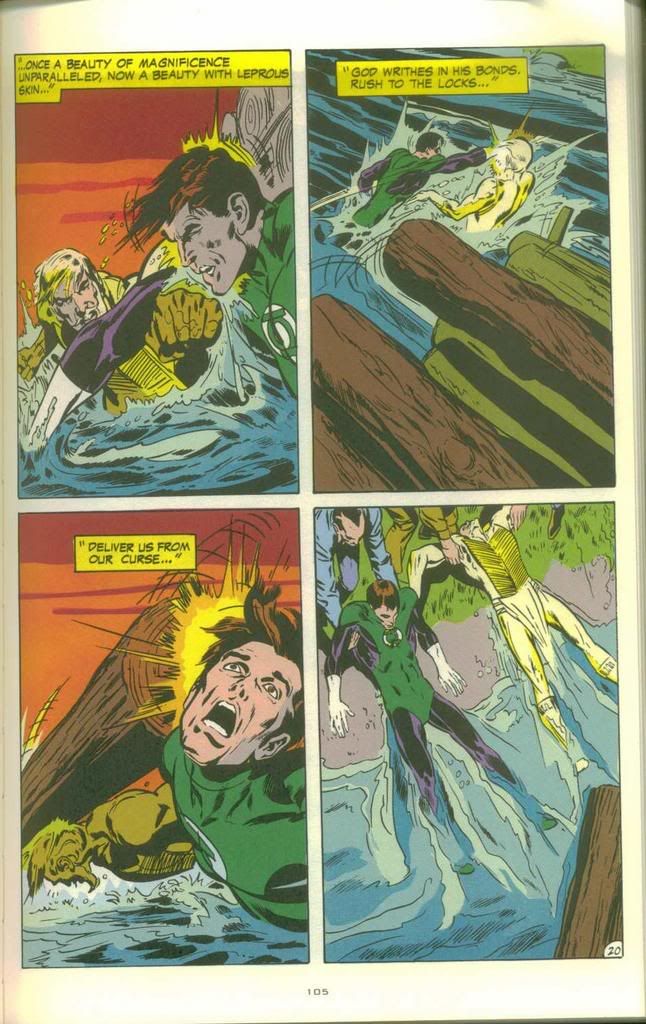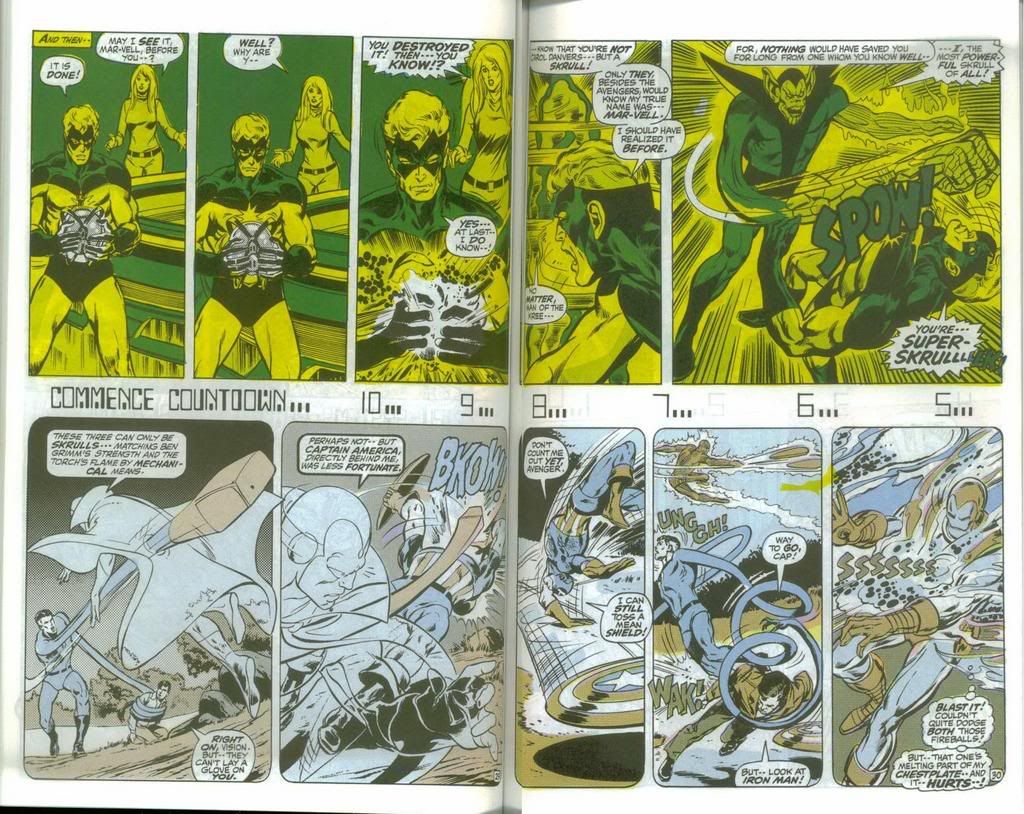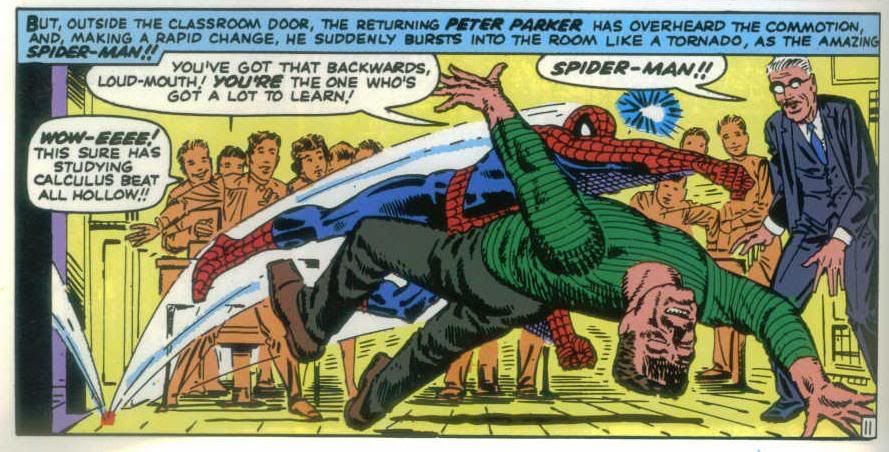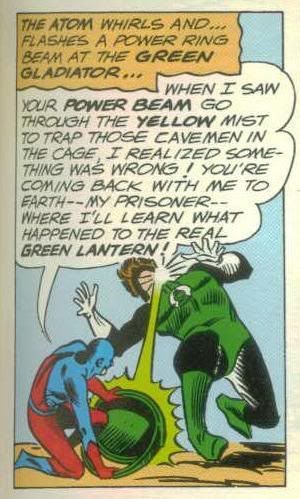Just for the heck of it, let's start off this week with a "why not?" purchase, Mythos: Fantastic Four (written by Paul Jenkins, art by Paolo Rivera). I love the FF, and Jenkins and Rivera probably do too, but beyond serving as a kind of generic introduction to the team, I don't really see the point of this book. Last year the First Family miniseries attempted to bridge the gap between the plainclothes adventurers of the first couple of issues and the celebrity superheroes to come. This retelling of the origin changes a number of elements but obviously has to leave the end result the same.
Accordingly, there's no real drama in the story beyond the pathos of becoming superhuman, and even that is glossed over. Indeed, the current editorial revision of making our heroes actual American astronauts, who just happened to be in the wrong place at the wrong time, sucks away another source of tension. Yes, we all know they're not "racing the Commies" anymore, but Reed and crew defying the government to go into space isn't just a plot point, it's a character-builder -- as is Reed's culpability in the accident itself. Both are absent from this version. Apart from all of that, though, the book is put together well, except Reed looks a little bullet-headed in spots and Ben's eyebrow-ridge is a bit too sharply defined at times. I'm tempted to say the most fun thing about the issue is the very last page, a cutaway drawing of the Baxter Building done up all photo-realistically.
Another impulse buy was Superman Confidential #8 (written by Dan Abnett & Andy Lanning, pencilled by Chris Batista, inked by Cam Smith), the first part of (yes, another) retelling of Forever People #1. In other words, it's Superman's first full-blown encounters with the New Gods, and I think it's more successful than Mythos. Batista draws a lithe, dynamic Superman, and Smith's inks and Jason Wright's colors make this a good-looking book. Abnett and Lanning bring in other Fourth World/early '70s characters like Morgan Edge and Victor Volcanum. Not much new ground is broken, but this kind of continuity-porn is what I expected SMConf to deal in, so in that respect, good job.
Here's the thing about calling something "52 Aftermath" -- 52 ended six months ago. I don't disagree with publishing Crime Bible #1 (written by Greg Rucka, drawn by Tom Mandrake) on Halloween, and I enjoyed it, but let's be clear: if you read 52, you know good and well what the Crime Bible is. If you didn't, wouldn't the title Crime Bible be at least somewhat attractive, even without the 52 brand? (I swear, all this unified trade-dress is getting out of hand.) Anyway, CB plays out like a late '60s-early '70s urban-paranoia horror movie, with Renee "The Question" Montoya investigating some poor schmuck's blundering across a secret society. I enjoyed Rucka's unadulterated take on Renee, and I thought it worked well to bring the reader into the story via the schmuck and not her. Mandrake's work was quite good this issue, and better specifically than his Batman fill-ins from earlier in the year.
At the risk of sounding hypocritical, I don't have as much of a problem with the title of 52 Aftermath: The Four Horsemen (#3 written by Keith Giffen, pencilled by Pat Olliffe, and inked by John Stanisci). Four Horsemen is generic enough that it might need the 52 qualifier. This installment reveals a lot about a certain former JLA mascot's recent association, and Giffen has some fun with that. In fact, this story has a lot of Greg Rucka influences, the more I think about it, and the presence of frequent 52 penciller Olliffe makes it feel the most connected to said miniseries. It needs to get moving, though -- the 4-H Club takes a pretty good shot from Superman this issue, but now we're at the halfway point and time to get serious.
Countdown to Mystery #2 has a pretty good Doctor Fate story (written by Steve Gerber, pencilled by Justiniano, inked by Walden Wong) and a so-so Eclipso one (written by Matthew Sturges, drawn by Steven Jorge Segovia). The Eclipso story involves the corruption of Plastic Man, and therefore tries to be both wacky and edgy. It does not succeed. The art is fine, but maybe that's the problem: it's appropriate for your average superhero-influenced Plastic Man story, but not for a harrowing inversion of all that's good and right about an inherently goofy character. It comes across pretty overwrought.
The Doctor Fate story finds him learning on-the-job how to cast the right demon-defeating spells. However, it also establishes just how far down the socio-economic ladder he's fallen, and what he needs to do to get back into a barely-normal life. This does not include a mystic golden helmet. Accordingly, I don't get the feeling that this Fate will be joining the Justice Society anytime soon. Not that he won't eventually -- why else would he have been brought back? -- but if DC Editorial keeps him true to this characterization, it'll be a while. Thankfully, the mundane concerns of this Kent Nelson are compelling enough to compete with the magic.
The lead story of Countdown To Adventure #3 (written by Adam Beechen, pencilled by Eddy Barrows, inked by Adam Ferreira) was pretty entertaining, albeit a little disconcerting. I didn't expect to see a kill-crazy kid slice open Starfire's thigh on page 3. Everyone in San Diego and on Rann is going crazy with Lady Styx fever, so naturally they're out to get Starfire and Adam Strange. Like I said, it's entertaining, but it feels a bit redundant too. I also don't like having Ellen Baker suspect Buddy of having fallen in love with Kory. It strikes me as a well-worn plot element which might appear to make sense, but which reinforces certain stereotypes. Clearly Ellen is frustrated because for a year she thought Buddy was dead, and now that he's back he's brought this golden space-goddess with him. If "Friday Night Lights'" Coach Taylor had brought Starfire back to Dillon from TMU, I expect Tami would be a little upset too. However, Ellen's in danger of becoming a cliche, and that's what I don't want to see.
Countdown #26 (written by Paul Dini and Justin Gray & Jimmy Palmiotti, story consultant Keith Giffen, drawn by Scott Kolins) was an exposition-riffic attempt to pull all of the various subplots together into a larger narrative. However, it chose to show all of the excitement through the riveting device of ... watching it on television. Yes, it's Third-Hand Theater -- we mostly watch the Monitors as they watch what's really important. Of course, you could argue that what's important is the Monitors' decision to "go to war," which I suppose will be pretty exciting assuming it happens in the pages of this title and not 25 weeks down the road. By the way, I think Black-Suit Superman, about to execute the Luthor of Earth-15, is our own Superboy-Prime who somehow survived the Sinestro Corps War. Hey, if Kyle's OK, why not him too?
There's nothing really wrong with Batman #670 (written by Grant Morrison, pencilled by Tony Daniel, inked by Jonathan Glapion). It doesn't have the stylistic zip of "The Club Of Heroes" or the over-the-top frenzy of Morrison's other arcs. However, it does have solid, dynamic characters in Batman, the three forgotten super-vixens, and Damian. I'm sure those more versed in Morrisonia could fit said trio and Damian (again in the Robin costume) into the taxonomy of heroes and wannabes explored in "Seven Soldiers," but I can only say they seem part of the same "here's our costume; we're super" paradigm. I thought the art was good, and reminiscent of Andy Kubert, but a bit flat, especially in the Ra's al Ghul scenes. Daniel does draw a good Batman, though.
I decided to drop Supergirl and the Legion of Super-Heroes (#35 written by Tony Bedard and drawn by Dennis Calero) after the first issue of this arc, so I'm three issues removed from that one. On its own, though, this isn't bad -- a fight between Atom Girl, Shadow Lass, and Wildfire, with Brainy helping the Legionnaires from afar and Drake's brother likewise guiding him. Meanwhile, Supergirl, Lightning Lad, and Saturn Girl find Evolvo Lad and prepare to fight him. I was only a litlte disoriented, so that's a positive. Art was fine, if a bit muddy and blocky. Best thing about the issue was also a little incredible -- 31st Century technology will still let Atom Girl do that old trick?
"That other" Legion shows up in the long-promised Action Comics #858 (written by Geoff Johns, pencilled by Gary Frank, inked by John Sibal). It begins with a great little three-page sequence which takes full advantage of the Superman origin as DC's version of the Nativity. It also incorporates that quasi-cinematic "DC Comics Proudly Presents" approach to credits, and even includes a splash page with a pinup of Supes himself. With this team having drawn the Superman-analogue over in Marvel's Supreme Power, there's also a wink to that series' paranoia. I have only minor complaints about Frank and Sibal's work: for some reason, Clark has an overbite; and many characters look a little wild-eyed, especially Lightning Lad. Also, I liked the two-page spread of the Silver Age Legion, but boy do they look Caucasian. I know that's the way things were in the '60s, and I wasn't looking for it, but it jumped out at me. If the Legion is the agent of diversity and tolerance, it's come a long way since then. Overall, though, this issue was a good setup and it's gotten me excited about the rest of the arc.
Finally, I bought Biff-Bam-Pow! #1 (by Evan Dorkin and Sarah Dyer), because I love quality humor, especially dressed up in pop sci-fi duds and incorporating lots of monkeys. I actually liked the "undercards" more than the main event, but it's all good. Also, don't miss the back cover, cleverly advertised on the front cover!
Full Post
